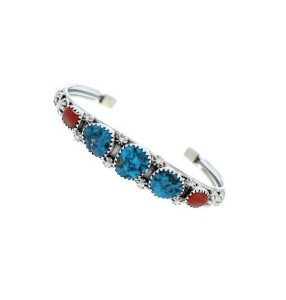
History of the Navajo Bracelet
Back in the 1950’s, 1960’s, and up through the 1970’s, 95 percent of women living in the state of Arizona wouldn’t even consider leaving the house for whatever reason without the comforting feel of her Navajo bracelet dangling on her wrist; women like the color of turquoise and it was a habit hard to break. A Navajo bracelet is an “attention getter.” So much so if traveling out of state there would be plenty of queries as to the beauty of the Navajo bracelet along with a comment like: “What is that marvelous thing hanging on your wrist?” Followed by another comment like: “Where can I buy one?”
That said Native American jewelry, perfected centuries ago by the Hopi, Navajo, and Zuni, Tribes, hasn’t always been the “flavor-of-the-month.” Sales of items like the Navajo bracelet made by local Indian Tribes on or off the reservations are the real thing, and sales of the Navajo bracelet and other types of jewelry still sprout like poppies in a vacant field. But it’s the outsider’s influence that has been moving into the Navajo bracelet field of play making bogus “Indian” jewelry from synthetic materials. Luckily, a fake Navajo bracelet wouldn’t pass muster from any of the Indian Tribes in Arizona; yet they still may look at a “foreign” made Navajo bracelet in terms of the quality, color, and craftsmanship.
Today’s Indian silversmiths who make the Navajo bracelet are not like their ancestors of centuries ago. They have also perfected the goldsmith and lapidaries techniques, as well. In other words, even the most critical eye cannot look at a Navajo bracelet and say that it “looks” like a Navajo bracelet “style;” ergo, it must be Navajo. There are so many Indian jewelry perfectionist today a Navajo bracelet transcends the usual tribal style.
In terms of a Navajo bracelet, cost turquoise values will range dramatically, and it’s not very easy to apply a solid value. In other words value can exceed the cost of the Navajo bracelet’s art work and craftsmanship involved. The turquoise Navajo bracelet is made of Sterling silver and 14k gold. And if you’re Navajo bracelet purchase is made at an authentic Native American store; whether in Arizona, New Mexico, or Durango, Colorado, you can be assured of its authenticity and definitely not fraudulent. However, in some stores the lowest quality of turquoise may be “stamped” as artificially colored.
